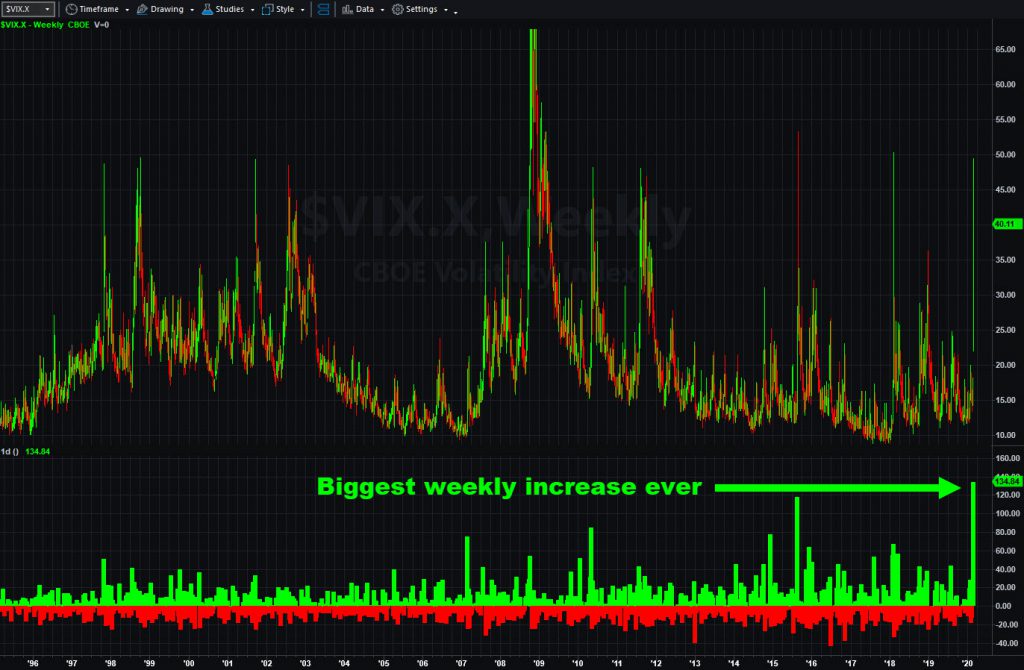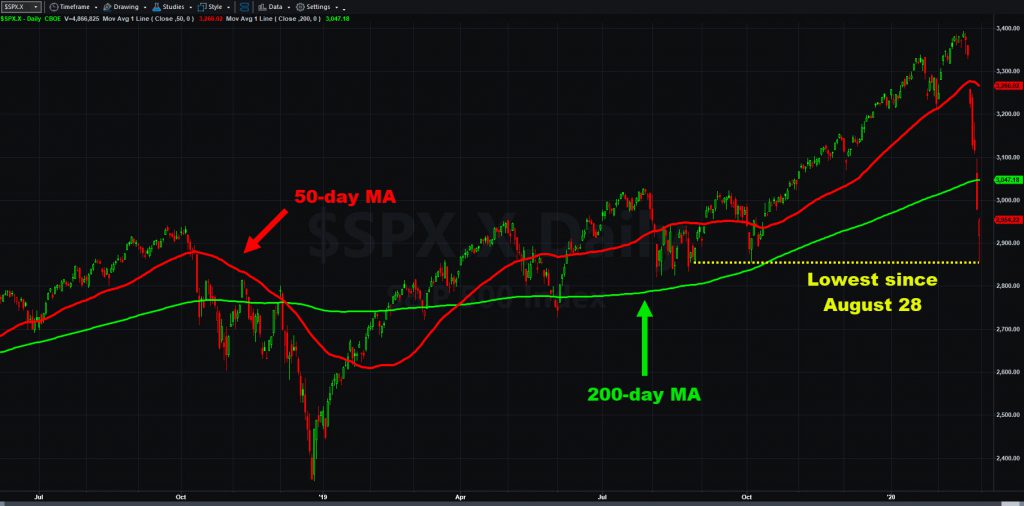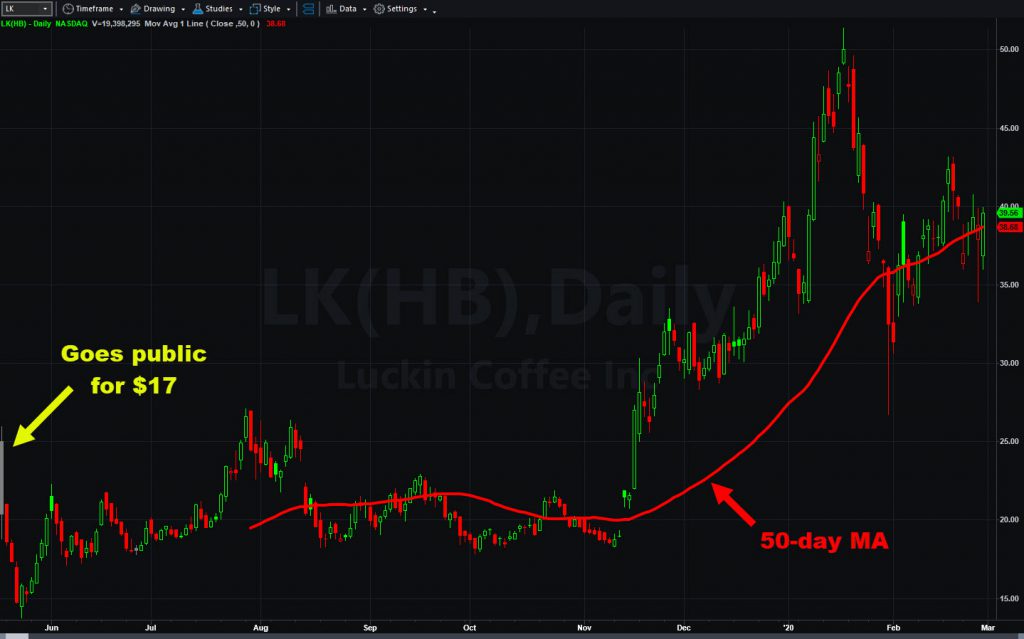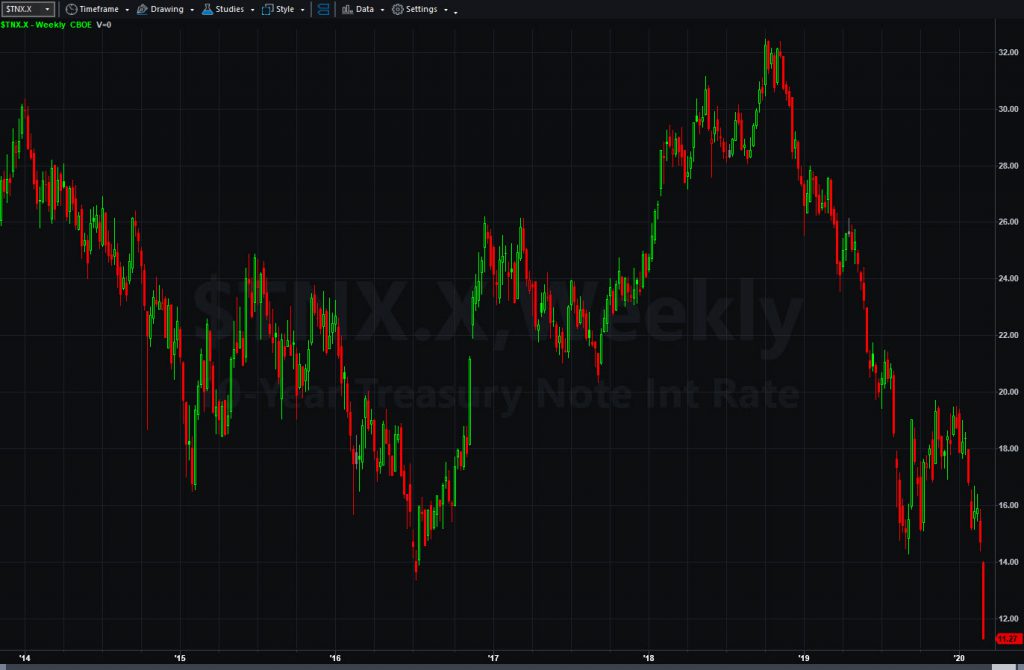Editor’s note: This article was originally published on March 2, 2020.
The stock market just had one of the most dramatic weeks in history as investors freaked out about coronavirus sickening the global economy.
The S&P 500 dropped 11.5 percent between Friday, February 21, and Friday, February 28. It was the biggest decline since the 2008 financial crisis, and almost twice the magnitude of other big crashes of the last decade. The move set lots of records. Here are the four craziest things in our book.
Volatility Rose More Than Ever
Cboe’s volatility index measures the cost of options, which cost more when the market moves a lot. Known as the VIX, this index usually spikes when the S&P 500 crashes.

Last week it jumped, which isn’t a surprise. But the size of the increase — 135 percent in a single week — was the largest ever.
The reason is that other market selloffs took shape over months, or at least weeks. In October 2008, for example, the S&P 500 had already been trending lower for an entire year. The October 1987 crash also followed more than a month of weakness.
The Fastest Correction in History
This time, there was almost no warning on the price charts. The S&P 500 hit a new all-time high of 3,393.5 on February 19. Just six sessions later it crossed 3054, translating into a 10 percent drop from the peak.
It was the fastest correction in history, beating the selloff between January 26, 2018, and February 8, 2018, by three days.
The carnage was so universal that only two companies the S&P 500 rose: Regeneron Pharmaceuticals (REGN) and Qorvo (QRVO). Meanwhile, over 350 members of the index fell by double-digits.

Traders Were So Confused That…
When the market’s moving like this, it’s hardly a surprise that people get confused and make mistakes. Last week they blundered by piling into an obscure stock that trades over the counter: Zoom Technologies (ZOOM).
“Zoom Technologies, Inc. does not have significant operations,” according to its official description. “Previously it distributed wireless communication products in the United States.”
That didn’t keep buyers from driving ZOOM up more than 100 percent. They meant to be purchasing shares of Zoom Video Communications (ZM), a teleconferencing system that’s gotten a huge boost from the coronavirus outbreak. In fact, Bernstein estimated ZM added more customers in the first two months of 2020 than all of last year thanks to the illness.
We’ll find more when ZM reports earnings Wednesday afternoon.
Chinese Stocks Were Oddly Strong
There was another oddity about the crazy market. Coronavirus might have started in China, but companies based in the country like Alibaba (BABA) and Nio (NIO) slid less than 5 percent last week.

The outperformance came as officials seemed to contain the virus. There’s also been a strong shift toward the country because of changes in global indexes and last year’s trade deal.
Biotechnology stocks, semiconductors and software makers also outperformed the S&P 500. Airlines and energy companies fell the most.
Speaking of energy, crude oil futures (@CL) broke to their lowest level in more than two years. Yields on the 10- and 30-year Treasuries additionally fell to new record lows as investors fled to safety.
The market is now pricing in a near-certainty that the Federal Reserve will cut interest rates by 50 basis points at its next meeting on March 18.
Jerome Powell seemed to back that up. An in an unscheduled statement halfway through Friday’s session the Fed chairman said, “we will use our tools and act as appropriate to support the economy.”

The Week Ahead
Coronavirus will probably remain the dominant story this week. How many cases are there? Will authorities restrict travel? What’s the mortality rate?
However, there are still some important economic reports and retail earnings. Here are a few big items aside from the disease:
- Today: The Institute for Supply Management’s manufacturing index is due. This segment of the economy was showing signs of rebound before coronavirus.
- Tuesday: Target (TGT) reports earnings in the premarket following a weak holiday-shopping season. Others issuing results include Kohl’s (KSS) and Nordstrom (JWN).
- Wednesday: ADP’s private-sector payrolls report and ISM’s service-sector index come out. Dollar Tree (DLTR) and Campbell Soup (CPB) report in the premarket. ZM’s in the afternoon.
- Thursday: Initial jobless claims are due. Will they show a coronavirus bump?
- Friday: The Labor Department issues non-farm payrolls for February.
Security futures are not suitable for all investors. To obtain a copy of the security futures risk disclosure statement Investment and Trading Disclosures Booklet – Futures.



























